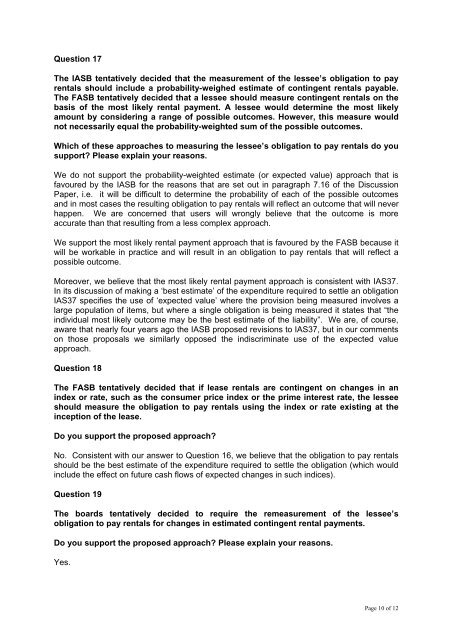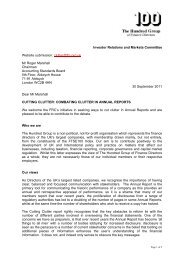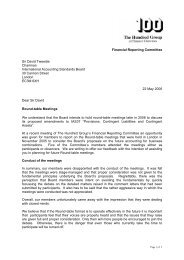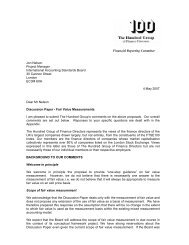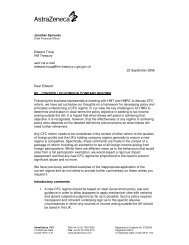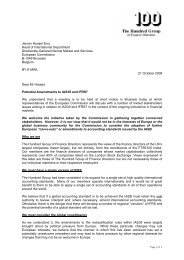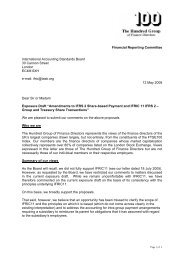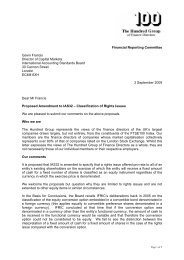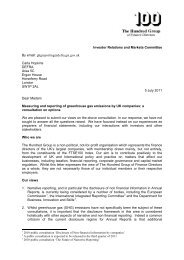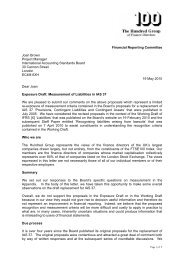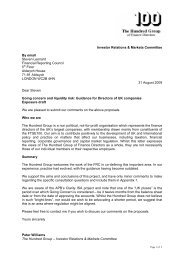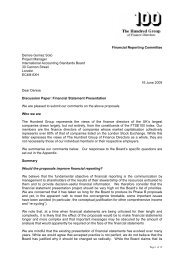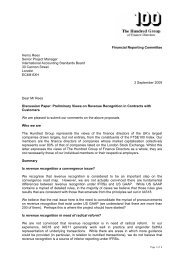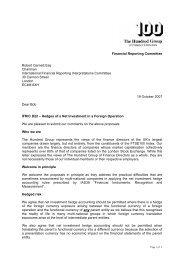Financial Reporting Committee Rachel Knubley Senior Project ...
Financial Reporting Committee Rachel Knubley Senior Project ...
Financial Reporting Committee Rachel Knubley Senior Project ...
You also want an ePaper? Increase the reach of your titles
YUMPU automatically turns print PDFs into web optimized ePapers that Google loves.
Question 17<br />
The IASB tentatively decided that the measurement of the lessee’s obligation to pay<br />
rentals should include a probability-weighed estimate of contingent rentals payable.<br />
The FASB tentatively decided that a lessee should measure contingent rentals on the<br />
basis of the most likely rental payment. A lessee would determine the most likely<br />
amount by considering a range of possible outcomes. However, this measure would<br />
not necessarily equal the probability-weighted sum of the possible outcomes.<br />
Which of these approaches to measuring the lessee’s obligation to pay rentals do you<br />
support? Please explain your reasons.<br />
We do not support the probability-weighted estimate (or expected value) approach that is<br />
favoured by the IASB for the reasons that are set out in paragraph 7.16 of the Discussion<br />
Paper, i.e. it will be difficult to determine the probability of each of the possible outcomes<br />
and in most cases the resulting obligation to pay rentals will reflect an outcome that will never<br />
happen. We are concerned that users will wrongly believe that the outcome is more<br />
accurate than that resulting from a less complex approach.<br />
We support the most likely rental payment approach that is favoured by the FASB because it<br />
will be workable in practice and will result in an obligation to pay rentals that will reflect a<br />
possible outcome.<br />
Moreover, we believe that the most likely rental payment approach is consistent with IAS37.<br />
In its discussion of making a ‘best estimate’ of the expenditure required to settle an obligation<br />
IAS37 specifies the use of ‘expected value’ where the provision being measured involves a<br />
large population of items, but where a single obligation is being measured it states that “the<br />
individual most likely outcome may be the best estimate of the liability”. We are, of course,<br />
aware that nearly four years ago the IASB proposed revisions to IAS37, but in our comments<br />
on those proposals we similarly opposed the indiscriminate use of the expected value<br />
approach.<br />
Question 18<br />
The FASB tentatively decided that if lease rentals are contingent on changes in an<br />
index or rate, such as the consumer price index or the prime interest rate, the lessee<br />
should measure the obligation to pay rentals using the index or rate existing at the<br />
inception of the lease.<br />
Do you support the proposed approach?<br />
No. Consistent with our answer to Question 16, we believe that the obligation to pay rentals<br />
should be the best estimate of the expenditure required to settle the obligation (which would<br />
include the effect on future cash flows of expected changes in such indices).<br />
Question 19<br />
The boards tentatively decided to require the remeasurement of the lessee’s<br />
obligation to pay rentals for changes in estimated contingent rental payments.<br />
Do you support the proposed approach? Please explain your reasons.<br />
Yes.<br />
Page 10 of 12


